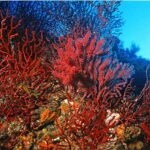London based design studio EcoLogic is creatively exploring the use of algae in different projects. Today, we check out their Bit.Bio.Bot exhibition at the Venice Architecture Biennale, which educates visitors on the amazing properties of algae, whilst showing how it can be harvested at home as part of the architecture.
“Cities are evolving into intelligent super-organisms and shall become capable of searching for opportunities of co-evolution within the urban sphere, both for their human and non-human citizens.” — BioLogicStudio

Living Cladding
The installation combines advanced architecture and microbiology to build artificial habitats that enable migroalgae to thrive in urban environments. It is divided into 3 parts:

Algae Vertical Farming with “bio bombolas”

Convivium
-
Living Cladding:
- turns walls into air purifiers
-
Algae Vertical Farming:
- enables citizens to grow their own algae: spirulina, chlorella
- Algae can be independently harvested from each unit several times per week to collect up to one hundred grams of biomass, which is the daily recommended protein intake of a family of four.
- While active in production, the Vertical Garden is able to absorb CO2 at a rate equal to three large mature trees, providing a clear path to carbon neutrality in architecture.
-
Convivium:
- a space for sharing and for collective experimentation on the future of food using algae.
- Holding 36 glasses of drinkable algae gel
The point of the exhibition is to showcase how one day city dwellers can purify their air, sequester carbon and grow their own sustainable food source with the help of one plant: algae.
Remember: Algae absorb more CO2 than trees.
“The entire installation – as well as the individual systems – are fully reversible. At the end of the Biennale Architettura, in November 2021, each unit will become an educational algae garden.”— EcoLogicStudio
The Bit.Bio.Bot exhibition combines computational design strategies (bit) with fabrication techniques (bot) to “implement a collective microbiological cultivation protocol” (bio).













